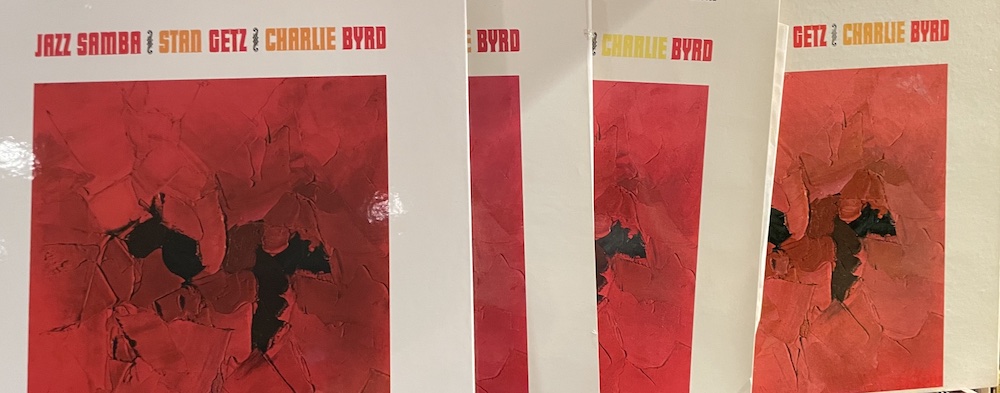Which "Jazz Samba" Sounds Best?
if ever there was a "belongs in every collection" record, this classic is one
"Jazz Samba" wasn't the first Bossa Nova record released in The United States, and it wasn't called one, but it was, and upon its release in 1962 it broke open the Brazilian music floodgate. Within months of its release there was Bossa Nova everything. This record was also the first in a popular series of Creed Taylor produced Verve releases featuring on their covers Olga Albizu's abstract art. It was a winning formula.
Recorded in a single day ("3 to 4 hours" according to engineer Ed Greene in the below video) February 13th, 1962 in Pierce Hall All Souls Unitarian Church, the album also made Stan Getz and Charlie Byrd household names in non-jazz loving households. Everyone from jazz "purists" to jazz haters loved this record. It hit #15 on the Billboard pop charts and went higher on the easy listening chart. While it was easy to listen to, it was hardly the kind of fluff found back then on the easy listening charts. The exposure of "Desafinado" to American audiences also made a star of the dashing and cool Antonio Carlos Jobim who'd written the song in the late '50s.
While Getz gets first billing here, Charlie Byrd was the musical engineer behind the record, having returned from a tour of Brazil with his trio featuring bassist Keter Betts and drummer Buddy Deppenschmidt, both of whom play on this record. Byrd added his brother Gene on bass—then a student at the nearby Peabody Conservatory so nepotism was not involved—and a second drummer, Bill Reichenbach because that was commonly done in Brazil. Getz brought "Desafinado" ("Out of Tune") to the group, inspired by Joao Gilberto's version.
Most of the album is up-tempo feel good music anchored by Getz's dreamy sax lines but side one ends with Brazilian guitarist Baden Powell's minor key haunting "Samba Triste"—another album highlight.
The recording benefits from the church's spacious ambience and engineer Ed Greene's excellent microphone and placement choices. It still sounds superb 60 years later and the music remains as fresh as it is not in the least bit challenging. It's a classic that's held up remarkably well musically and sonically.
I compared this recent reissue, part of the Verve/Acoustic Sounds series, with an original pressing bought when the record first was released that's held up remarkably well, with a Speakers Corner 1996 reissue mastered by Kevin Gray at AcousTech mastering and with a double 45 Analogue Productions 2013 reissue mastered at Sterling Sound by George Marino.
All of these versions sound good. You'd have to work to ruin it. However, this new Ryan Smith edition, sounds remarkably similar to the original pressing, especially the high frequency transients that help clarify Charlie Byrd's guitar setting it pleasingly against Getz's breathy but powerful, voluminous sax. The KG cut is somewhat softer overall and the double 45 version is also not quite as well-clarified. If you've already got any of those, you're set. If you have none of those, this is a record you'll most likely enjoy now and for years to come. Comes in a laminated Stoughton "tip-on" jacket













































